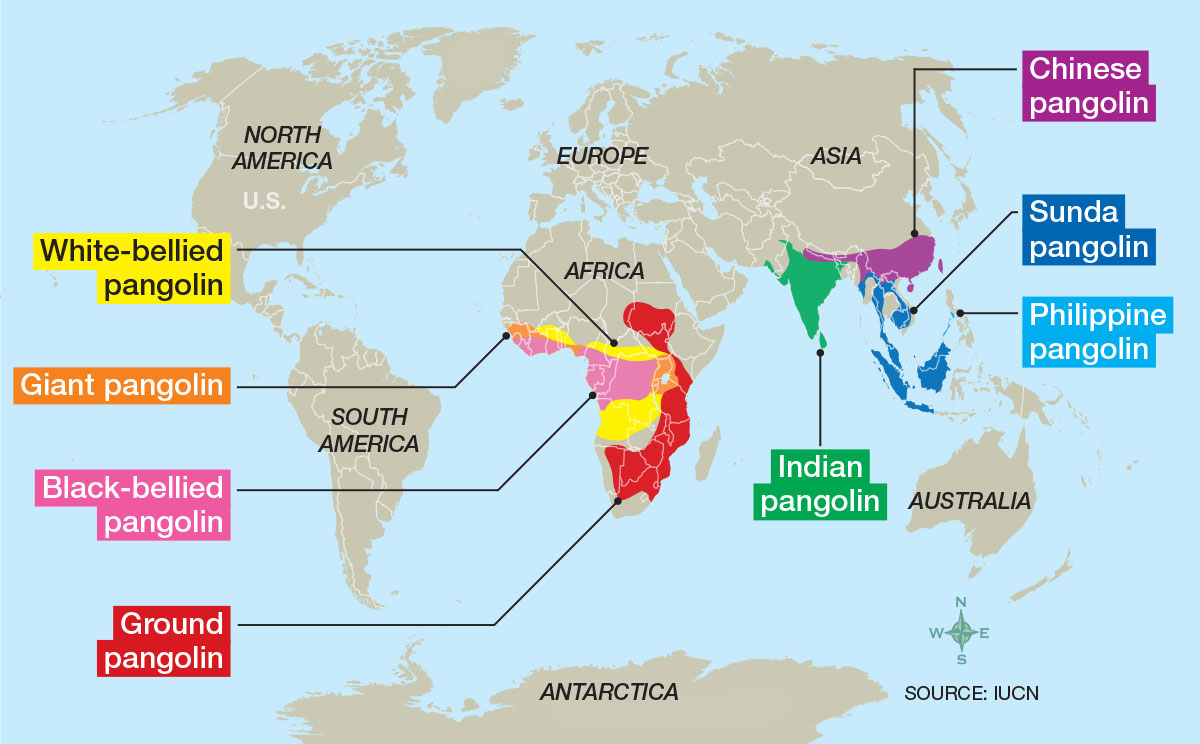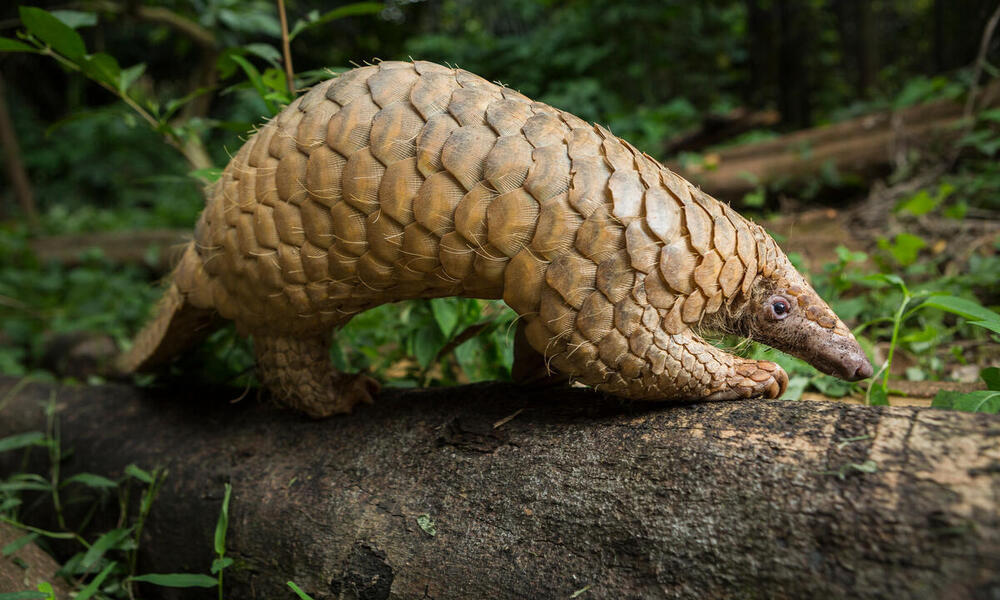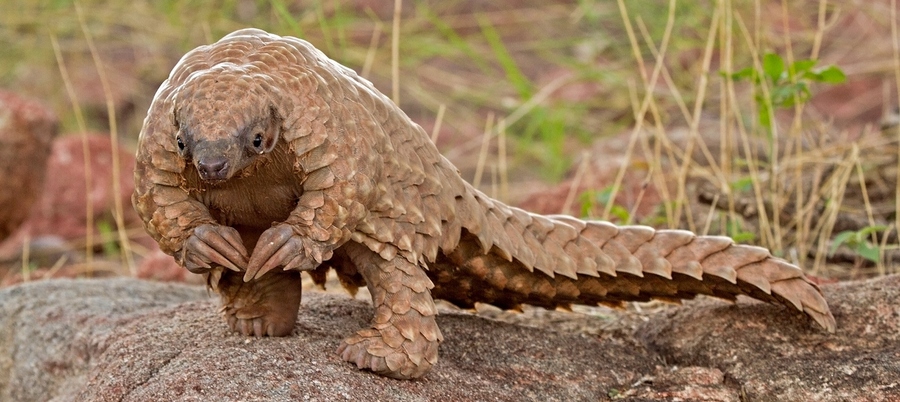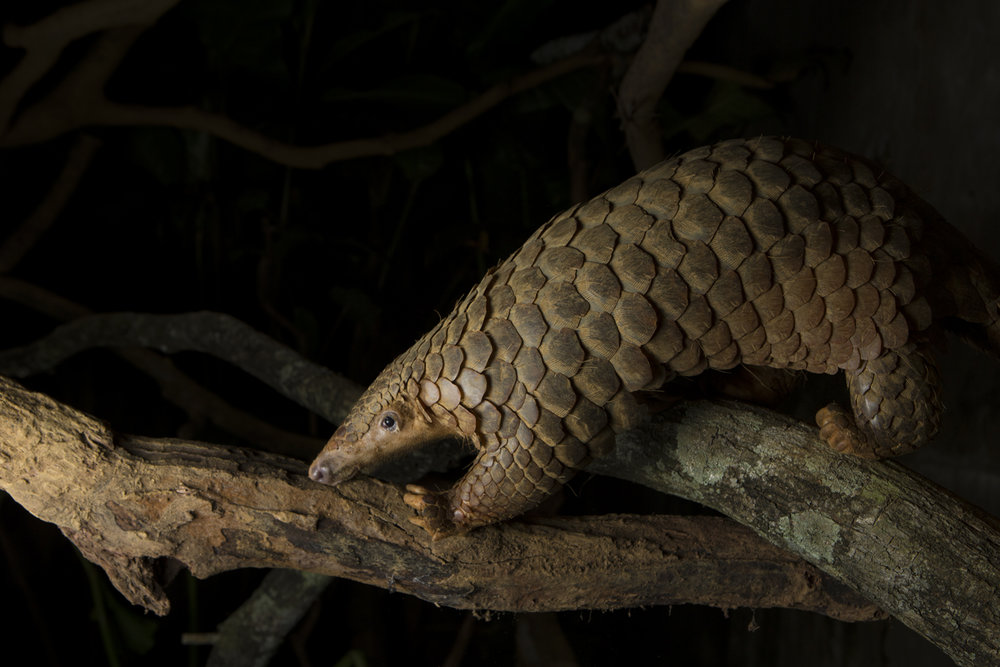STATUS
Near Threatended


These solitary, primarily nocturnal animals, are easily recognized by their full armor of scales. A startled pangolin will cover its head with its front legs, exposing its scales to any potential predator. If touched or grabbed it will roll up completely into a ball, while the sharp scales on the tail can be used to lash out.
Also called scaly anteaters because of their preferred diet, pangolins are the most trafficked mammal in the world-with demand primarily in Asia and in growing amounts in Africa-for their meat and scales. There is also demand in the United States for pangolin products, particularly for their leather to be used in boots, bags, and belts.
Eight species of pangolins are found on two continents. They range from Vulnerable to Critically Endangered.
Four species live in Africa: Black-bellied pangolin (Phataginus tetradactyla), White-bellied pangolin (Phataginus tricuspis), Giant Ground pangolin (Smutsia gigantea) and Temminck's Ground pangolin (Smutsia temminckii).
The four species found in Asia: Indian pangolin (Manis crassicaudata), Philippine pangolin (Manis culionensis), Sunda pangolin (Manis javanica) and the Chinese pangolin (Manis pentadactyla).
All eight pangolin species are protected under national and international laws, and two are listed as Critically Endangered on the IUCN Red List of Threatened Species.

STATUS
Near Threatended

SCIENTIFIC NAME
Pholidota

POPULATION
Only 8 Species left

LENGTH
30 to 90 cm (1 to 3 feet)

WEIGHT
5 to 27 kg (10 to 60 pounds)

HABITAT
FORESTS

Pangolins play a critical role in their ecosystems. They provide the earth with all-natural pest control and are fantastic tenders of soil, and they do these things simply through their everyday behaviors. It is said that a single pangolin consumes as many as 70 million insects per year, mainly ants and termites.
If pangolins go extinct, there would be a cascading impact on the environment. "Pangolins save us millions of dollars a year in pest destruction. These shy creatures provide a vital service and we cannot afford to overlook their ecological role as natural controllers of termites and ants."
In China and Vietnam, pangolins are highly prized by consumers for their meat and their unique scales. While they are a potent defence against predators, their scales are useless against poachers, and all eight species in Asia and Africa are now under threat.
It is presumed that pangolins have a lifespan of twenty years in the wild, since the oldest recorded pangolin lived for 19 years in captivity.
Amazing Facts About the Pangolin. The Pangolin, otherwise known as the scaly anteater, is the only mammal in the world to be covered from head to toe in keratin scales




